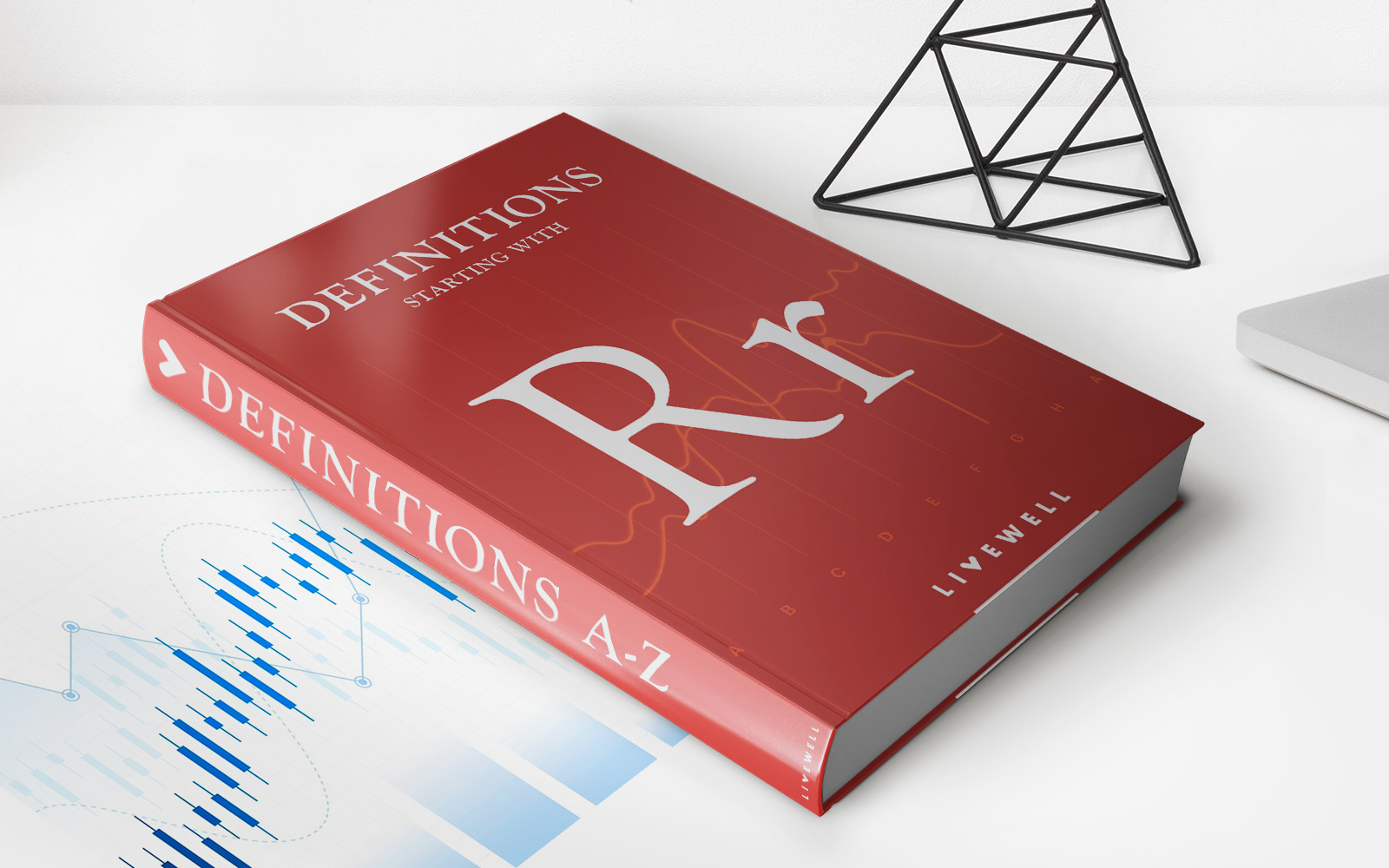

Finance
What Is A Senior Revolving Credit Facility?
Published: February 29, 2024
Learn how a senior revolving credit facility works in finance and how it can benefit your business. Understand the key features and advantages.
(Many of the links in this article redirect to a specific reviewed product. Your purchase of these products through affiliate links helps to generate commission for LiveWell, at no extra cost. Learn more)
Table of Contents
Introduction
In the realm of corporate finance, a senior revolving credit facility holds significant importance as a flexible and accessible source of funding for businesses. This financial instrument serves as a lifeline for companies, allowing them to address working capital needs, fund strategic initiatives, and navigate through uncertain economic conditions. Understanding the nuances of a senior revolving credit facility is crucial for both financial professionals and business owners seeking to optimize their capital structure and maintain financial stability.
At its core, a revolving credit facility is a type of financing agreement that provides borrowers with the flexibility to withdraw, repay, and re-borrow funds up to a predetermined credit limit. This revolving nature distinguishes it from traditional term loans, offering a dynamic and adaptable funding solution. Senior revolving credit facilities, in particular, represent a form of senior debt, which means that they hold the highest priority in terms of repayment in the event of a company's insolvency or liquidation. This seniority provides a layer of security for lenders, making it an attractive option for both borrowers and creditors.
Throughout this article, we will delve into the intricacies of senior revolving credit facilities, exploring their features, advantages, and potential drawbacks. By gaining a comprehensive understanding of this financial tool, readers will be equipped to make informed decisions regarding their financing strategies and leverage the benefits of senior revolving credit facilities to propel their business forward.
Understanding Revolving Credit Facilities
Revolving credit facilities are a versatile form of financing that provide businesses with ongoing access to capital within a specified credit limit. Unlike traditional term loans, which involve a lump-sum disbursement followed by fixed repayments over a predetermined period, revolving credit facilities offer a revolving line of credit that can be utilized as needed. This flexibility empowers businesses to manage their cash flow more effectively, address short-term funding needs, and capitalize on strategic growth opportunities.
One of the key features of revolving credit facilities is the revolving nature of the borrowed funds. As a borrower repays the outstanding balance, the available credit is replenished, allowing for future borrowings within the predefined limit. This revolving structure aligns with the dynamic financial requirements of businesses, enabling them to navigate through fluctuating cash flows and capitalize on time-sensitive investments without the need to repeatedly apply for new loans.
Furthermore, revolving credit facilities often come with variable interest rates, providing a level of adaptability in borrowing costs. This contrasts with fixed-rate term loans, where the interest rate remains constant throughout the loan term. While the variability of interest rates introduces an element of uncertainty, it can also offer potential cost savings when market interest rates decrease.
Overall, the understanding of revolving credit facilities lies in their ability to provide businesses with a flexible source of funding that can be utilized on an ongoing basis. By leveraging this financial tool, companies can effectively manage their working capital, seize growth opportunities, and navigate through economic fluctuations with greater agility.
Senior Revolving Credit Facilities
Senior revolving credit facilities represent a form of senior debt financing that holds the highest priority in the capital structure of a company. As such, these credit facilities are granted precedence over other forms of debt in the event of insolvency or liquidation, providing a level of security for lenders. This seniority is a key factor that influences the terms and conditions of the credit facility, as well as the associated interest rates and fees.
From a lender’s perspective, senior revolving credit facilities offer a lower level of risk compared to junior or subordinated debt, making them an attractive investment opportunity. The seniority position ensures that in the event of default, the assets securing the credit facility are prioritized for repayment, reducing the potential loss for the lending institution. This enhanced security often translates to more favorable terms for borrowers, including higher credit limits, lower interest rates, and more flexible repayment terms.
For businesses, senior revolving credit facilities serve as a reliable source of working capital, allowing them to manage day-to-day operational expenses, pursue strategic initiatives, and navigate through economic downturns. The revolving nature of these credit facilities aligns with the fluidity of business operations, enabling companies to access funds as needed and repay the outstanding balance to free up additional credit for future use.
Furthermore, senior revolving credit facilities can be utilized to support various corporate activities, including mergers and acquisitions, capital expenditures, and expansion projects. The accessibility and flexibility of these credit facilities make them a valuable tool for optimizing a company’s capital structure and maintaining financial agility in a dynamic business environment.
Overall, senior revolving credit facilities play a pivotal role in the financial landscape, providing businesses with a secure and adaptable source of funding while offering lenders a favorable risk profile. Understanding the dynamics of senior revolving credit facilities is essential for businesses seeking to optimize their financing strategies and maintain financial resilience.
Advantages of Senior Revolving Credit Facilities
Senior revolving credit facilities offer a host of advantages for both borrowers and lenders, making them a preferred financing option in the corporate landscape. Understanding these advantages is essential for businesses seeking flexible and reliable sources of funding to support their operational and strategic initiatives.
- Financial Flexibility: One of the primary advantages of senior revolving credit facilities is the financial flexibility they provide to businesses. The revolving nature of these credit facilities allows companies to access funds as needed, providing a cushion to manage working capital requirements, address short-term financial needs, and capitalize on growth opportunities without the constraints of a traditional term loan.
- Security and Seniority: As senior debt instruments, revolving credit facilities hold a senior position in the capital structure, providing lenders with a higher level of security in the event of default or insolvency. This seniority translates to reduced risk for lenders and can result in more favorable terms for borrowers, including higher credit limits and lower interest rates.
- Working Capital Management: Senior revolving credit facilities serve as an effective tool for managing working capital, allowing businesses to navigate through fluctuations in cash flow, seasonal variations in demand, and unforeseen expenses. The ability to access funds on a revolving basis provides a safety net to maintain operational continuity.
- Strategic Initiatives: These credit facilities can be leveraged to support strategic initiatives such as mergers and acquisitions, expansion projects, and capital expenditures. The accessibility and adaptability of the funds make them well-suited for financing growth-oriented endeavors, providing businesses with the necessary resources to pursue their corporate objectives.
- Cost Savings and Interest Management: The variable interest rates associated with revolving credit facilities offer the potential for cost savings when market interest rates decrease. This interest rate flexibility allows businesses to manage their borrowing costs more effectively, aligning with their financial objectives and market conditions.
Overall, the advantages of senior revolving credit facilities position them as a valuable financial tool for businesses looking to optimize their capital structure, maintain financial resilience, and seize growth opportunities in a dynamic business environment.
Disadvantages of Senior Revolving Credit Facilities
While senior revolving credit facilities offer numerous advantages, it is essential to consider the potential drawbacks associated with these financial instruments. Understanding the disadvantages can help businesses make informed decisions regarding their financing strategies and assess the implications of utilizing revolving credit facilities as part of their capital structure.
- Interest Rate Volatility: The variable interest rates linked to revolving credit facilities can introduce a level of uncertainty in borrowing costs. Fluctuations in market interest rates may impact the interest expenses incurred by businesses, potentially leading to higher borrowing costs during periods of increasing interest rates.
- Repayment Pressures: The revolving nature of these credit facilities requires disciplined repayment strategies to avoid prolonged indebtedness. Without a structured repayment plan, businesses may find themselves trapped in a cycle of revolving debt, leading to increased interest expenses and potential challenges in managing long-term debt obligations.
- Security Requirements: Lenders offering senior revolving credit facilities may require collateral or security interests to mitigate their risk exposure. This requirement places an additional burden on businesses, especially those with limited tangible assets available to pledge as security, potentially restricting their access to these credit facilities.
- Complexity in Financial Management: Managing revolving credit facilities alongside other forms of debt and financial obligations can add complexity to a company’s financial management. Balancing the utilization of revolving credit with long-term financing needs and capital structure optimization requires careful strategic planning and monitoring.
- Potential for Over-Reliance: Businesses may become overly reliant on revolving credit facilities as a consistent source of funding, leading to a dependency that could impact their financial stability. Overutilization of these credit facilities without a clear repayment strategy can strain the company’s financial health and creditworthiness.
By carefully evaluating the potential disadvantages of senior revolving credit facilities, businesses can proactively address these challenges and develop mitigation strategies to optimize their use of these financial instruments while safeguarding their long-term financial well-being.
Conclusion
In conclusion, the role of senior revolving credit facilities in the realm of corporate finance cannot be understated. These versatile financial instruments provide businesses with a flexible and accessible source of funding, allowing them to manage working capital, pursue strategic initiatives, and navigate through dynamic market conditions. The seniority of these credit facilities within the capital structure offers a layer of security for lenders, making them an attractive investment opportunity while providing favorable terms for borrowers.
By understanding the advantages and potential drawbacks of senior revolving credit facilities, businesses can make informed decisions regarding their financing strategies, leveraging the benefits of these credit facilities while addressing the associated challenges. The financial flexibility, security, and working capital management capabilities offered by senior revolving credit facilities position them as a valuable tool for businesses seeking to optimize their capital structure and maintain financial resilience.
It is essential for businesses to approach the utilization of revolving credit facilities with a strategic and disciplined mindset, considering the implications of interest rate volatility, repayment pressures, and potential over-reliance. By proactively addressing these considerations and implementing sound financial management practices, businesses can harness the benefits of senior revolving credit facilities while mitigating the associated risks.
Ultimately, senior revolving credit facilities serve as a dynamic and adaptable financing solution, empowering businesses to seize growth opportunities, navigate through economic uncertainties, and enhance their overall financial agility. By embracing a comprehensive understanding of these credit facilities, businesses can optimize their capital structure, maintain financial stability, and position themselves for sustained success in a competitive business landscape.














